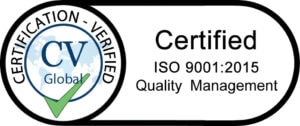Rugged Vs consumer mobiles - Ensuring you make the right choice.
Home / Blog / Buyer’s Guides / Rugged Vs consumer mobiles – Ensuring you make the right choice
Making the right decision when choosing between rugged and consumer mobile devices could save your business time and money, so don’t treat this choice lightly.
When businesses are looking to choose work mobile devices, they have a wide range of options available to them. Whether you are deploying mobile devices for the first time, or looking to upgrade your existing devices as they approach their end of life, the decisions made now will have an impact for years to come.
A key decision for many businesses will be whether to opt for rugged devices. This isn’t just a question that needs to be asked of firms that are currently using consumer gadgets. You might already have opted for rugged devices in your existing estate, but are you sure this is the most appropriate strategy for your needs?
Making the right choice improves processes, cuts costs and minimises downtime, ensuring your employees have the best tools for the job, and this is not necessarily the toughest hardware. Semi-rugged or consumer gadgets, for instance, could offer you all the functionality you need at a lower cost. So how do you know if they’re the right choice for your operations? Here are a few things to keep in mind.
What defines rugged devices?
‘Rugged’ can cover a fairly wide range of devices, but will generally refer to any gadget that has been designed or specialised for harsh and extreme environments. But not all rugged devices are alike.
There are a variety of ratings and certifications, from basic splash resistance up to military-grade (Mil-Spec) quality like the MIL-STD-810G standard. Some devices are marketed as ‘rugged’ simply because they have an IP rating and can survive a minor drop. In practice, these would be considered ‘semi-rigged’, whereas other options have gone through much tougher testing.
For instance, within the IP certification, there is IP43, which protects against solid objects like wires and against water sprays up to 60 degrees vertically. IP68, on the other hand, is dust tight and offers two- to eight-hour protection, plus protection against the effects of immersion in water under pressure for long periods. Which standard you choose will depend on the conditions you expect your workforce to encounter.
IP takes care of dust, sand and water. In theory, MIL-STD-810G covers a wide range of factors to dropping and tumble, extreme hot and cold temperatures, severe vibrations and 29 other such factors.
However, it’s not a regulated standard and a product only needs to pass seven of these factors to be certified, so even if a device is MIL-STD-810G, it’s not necessarily right for your business. It can be difficult to ascertain what tests a device has gone through to be rated to this standard, so it helps to have an expert on hand to help you navigate these terms.
There are a few disadvantages to rugged devices. Costs are typically higher, while they may be based on older technology than the latest consumer gadgets, with slower performance or less access to key apps. On the other hand, they can also offer longer battery life and purpose-built accessories, in addition to their headline durability and lower downtime.
Consumer devices, meanwhile, may be cheaper to acquire but they come with their own headaches. For instance, every time you buy more devices for the team, you’ll need to make sure the apps are compatible with the latest version. If new devices come out or a software update means that an app becomes non-compatible, the cost of upgrading can be significant.
Factoring in total cost of ownership
One of the main reasons why some firms may be hesitant about investing in rugged devices will be the initial outlay that such hardware requires, especially when compared to a BYOD strategy that relies on employee-owned consumer gadgets. But while it is true that, in general, rugged devices will come with a higher price tag than consumer devices – especially for the most robust, Mil-Spec, equipment – this is far from the end of the story.
Upfront costs are only a part of the equation when it comes to calculating the best value for your business, and strategies such as leasing can offset this, making this a cheaper and preferred option for many companies.
A key factor to take into account is the cost of downtime – and this goes far beyond potential repair costs. Being without the right mobile devices while they are repaired or replaced can be hugely damaging for a business. It means processes grind to a halt and critical operations take longer and may be more prone to errors, all of which can cost a firm money and damage its reputation.
But what does this mean in real terms? Let’s say, for instance, that a company with 100 users is looking for devices. They may spend £200 per user for consumer devices, which have to be replaced after two years. This means total hardware expenditure of £40,000 over a four-year period.
On the other hand, it may cost £1,000 per user to equip the business with rugged devices, although these will last all four years, for a total cost of £100,000.
But this is far from the end of the story. Say a rugged device has a failure rate of 15 per cent over the course of a year, compared with 35 per cent for a consumer device. Assuming it takes five days to turnaround and repair or replace a device, this means a company with 100 devices would lose 75 days of work each year to downtime with a rugged device, or 175 for consumer devices.
At an average cost of £185 in lost productivity and revenue per day, this would mean that over four years, a rugged deployment would expect to incur total downtime-related costs of £55,500, whereas with consumer devices, this would add up to £129,500.
This means the total expenditure over the four-year period would be £155,500 for rugged, and £169,500 for consumer – so despite the significantly higher initial expenditure, rugged devices work out cheaper in the long run.
There are other downtime factors and expenses to consider. For instance, many of today’s consumer gadgets don’t have easily replaceable batteries – a feature which is still offered on many rugged devices.
This limits their lifespan and means even if they avoid breakage, they will need to be replaced more frequently as components age and fail, adding further cost and disruption as replacements need to be deployed more frequently. This is why we would normally deploy devices with a sealed battery over a 24-month period – you would need to factor in this when working out the total cost of your deployment.
The scenarios where rugged matters
If you expect to be operating in a risky environment, rugged devices are often the way to go. But what scenarios will this cover?
Sometimes this may be obvious – if you expect to work frequently outdoors in all weathers, gadgets with higher IP waterproof ratings will be highly valuable. Devices that can be used while wearing gloves will also be important if they will be needed when it is cold and wet. Elsewhere, outdoor environments that will expose your device to dust or heat can be highly damaging.
But not every scenario is so clear cut. For example, warehouse work in indoor, climate-controlled environments may seem relatively low risk, but any location where there are concrete floors or moving machinery can put consumer-grade devices at serious risk.
In a warehouse expected to be free from dust or water, IP ratings will not be necessary, but a good drop spec is a must. You may think that in scenarios such as these, you can get away with a consumer device and an aftermarket protective case, but this could end up costing you a lot more than you save. To determine if fully rugged devices are right for you, ask these key questions:
- Will your device be exposed to water, heat, dust, or pressure changes (such as high altitudes)?
- Will you need a barcode scanner, and if so, how frequently will it be used?
- What surfaces are you working on – could a consumer-grade device survive a drop from four feet, even with a case?
- How long will devices need to last between battery charges – will they need to be shared between multiple shifts?
- How critical is the device to your operations – will employees be able to work without it, if necessary?
- Do you need unique peripherals to support it?
The answers to these questions should give you some idea about whether a consumer device will be adequate, or if you would be better off investing in rugged devices. But if in doubt, having an expert partner who can offer advice can help ensure you make the right decision. Let us help you identify your needs and what the potential cost of downtime will be to ensure you pick the right devices.












